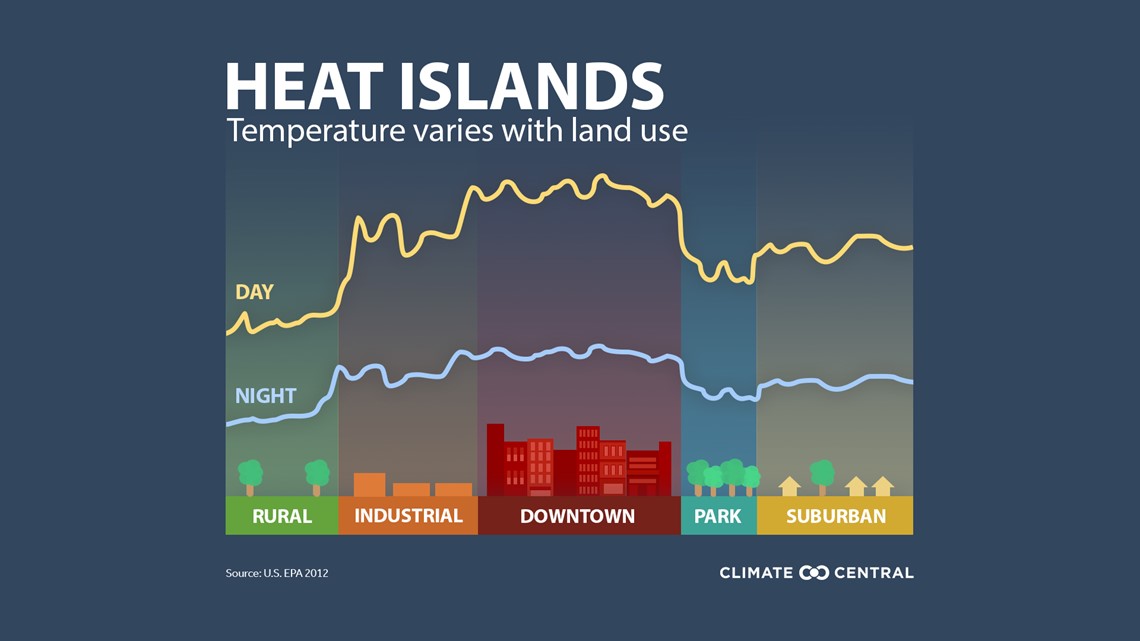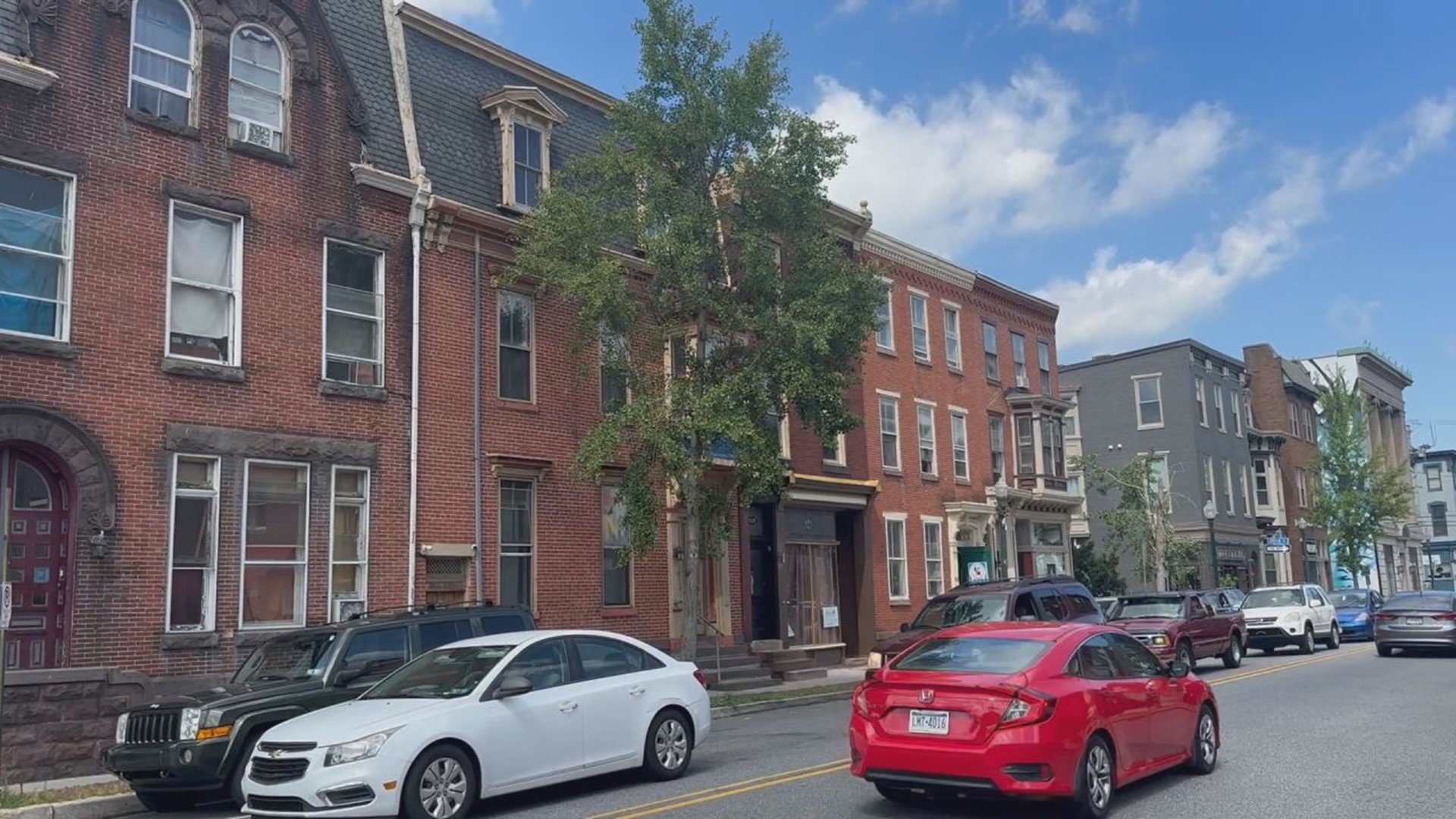HARRISBURG, Pa. — Sunny skies and high temperatures are staples of the summertime. However, long periods of high heat can have negative impacts on our health, especially for those who live in urban areas.
The phenomenon of cities being hotter than surrounding rural areas is known as the urban heat island. It’s not a new concept; however, in a warming climate, it is cause for concern.
“An urban heat island is the idea that temperatures in the city are relatively warmer than temperatures in the surrounding countryside. In Pennsylvania, for the most part, that means forests and agricultural fields,” said Tim Hawkins, professor of Geography and Earth Science at Shippensburg University. “If the climate warms and more people are moving to cities, and the population is growing, and the city is also 10 degrees hotter than say another location nearby, then, yeah, it’s sort of this cumulative effect with everything coming together to create a perfect storm as it were.”


Hawkins and his students have spent time studying this issue in south central Pennsylvania. Hawkins says that while urban heat island impacts are greater in big cities, data shows that we’re not immune to those impacts in places like Harrisburg.
“On average, our urban heat island for Harrisburg, when you compare it to, say, a rural location out in the outskirts of Mechanicsburg, was about 2.5 degrees Celsius on average. So you’re in the 4 to 5 degree range Fahrenheit,” he said.
And that’s just an average. Hawkins says at times, temperatures can be 18 to 20 degrees hotter in a downtown urban core like Harrisburg compared to the surrounding countryside.
This doesn’t come without consequence. Heat is the deadliest natural hazard in the U.S.
So how do we combat this issue? Experts say it involves increasing the amount of green in a city.
“We know there’s tremendous amounts of benefits from having green stuff. And it’s not just small green stuff. It’s not grass. It’s canopy cover,” said Vincent Cotrone, an urban forester at Penn State Extension. “It’s about finding space for greenery, whether it be a pocket park or that overflow parking. Does it need to be paved? Maybe it can be what we call grass pavers.”
Planting trees, installing green or cool roofs and adding pocket parks are just a few ways we can not only help reduce the impacts of the urban heat island, but can also filter air and manage stormwater runoff.
“If we’re going to deal with urban heat island and mitigate climate change, we need more green stuff in our towns,” Cotrone declared.
Cotrone says this isn’t a single entity's task, rather a partnership between neighbors planting more native species and investing in their neighborhood, along with government involvement to do the same.

